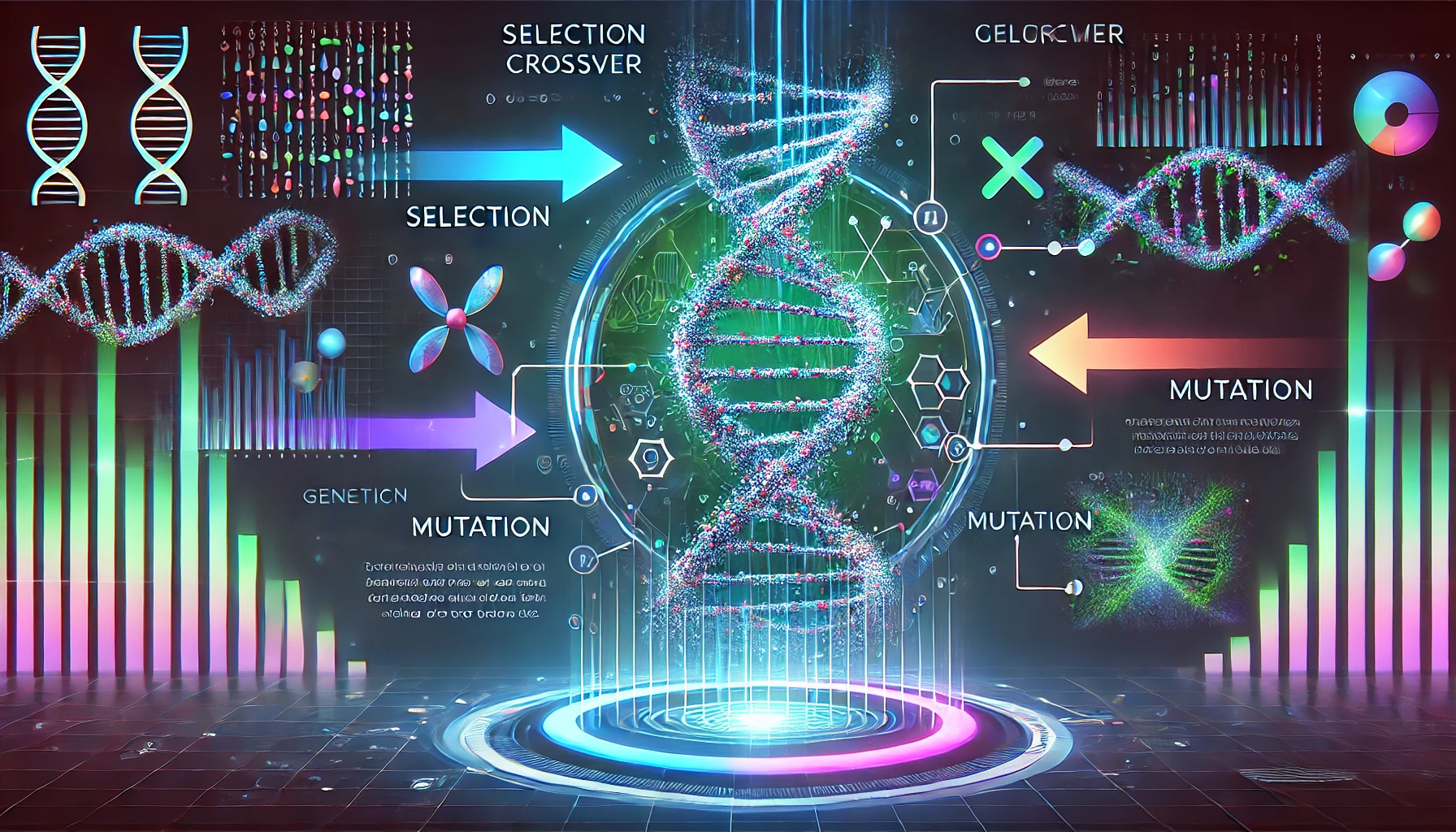Exploring Genetic Algorithms: Nature-Inspired Optimization

Genetic Algorithms (GAs) are a fascinating area of artificial intelligence and computational optimization. Inspired by the process of natural selection, these algorithms offer innovative solutions to complex problems by mimicking biological evolution. Let’s explore how genetic algorithms work and their applications in various fields.
1. Introduction to Genetic Algorithms
Genetic Algorithms are search heuristics that emulate the process of natural evolution. They are used to find approximate solutions to optimization and search problems through mechanisms inspired by biological evolution, such as selection, crossover, and mutation.
2. Key Concepts and Phases
2.1. Initialization
The process begins with the initialization of a population of potential solutions, represented as chromosomes. These solutions are typically encoded as strings of binary digits (0s and 1s), although other encodings can be used.
2.2. Selection
Selection involves choosing the fittest individuals from the population to pass their genes to the next generation. Fitness is determined by a fitness function that evaluates how well each solution solves the problem at hand.
2.3. Crossover (Recombination)
Crossover is a genetic operator used to combine the genetic information of two parent individuals to generate new offspring. This mimics biological recombination, promoting genetic diversity.
2.4. Mutation
Mutation introduces random changes to individual genes, providing genetic diversity and allowing the algorithm to explore a broader search space. This helps prevent premature convergence on suboptimal solutions.
2.5. Evaluation
After the new generation is created, each individual's fitness is evaluated. The process iterates through selection, crossover, and mutation until a stopping criterion is met, such as a satisfactory fitness level or a maximum number of generations.
3. Applications of Genetic Algorithms
3.1. Optimization Problems
GAs are widely used in solving optimization problems where traditional methods might fail. Examples include optimizing engineering designs, scheduling, and resource allocation.
3.2. Machine Learning
In machine learning, GAs are employed for hyperparameter tuning, feature selection, and evolving neural network architectures.
3.3. Artificial Creativity
GAs have been used in art, music, and design to evolve creative solutions. For instance, they can generate novel artworks or compose music by evolving patterns and themes.
3.4. Bioinformatics
In bioinformatics, GAs help in sequence alignment, protein structure prediction, and evolutionary biology studies by simulating the processes of genetic evolution.
4. Advantages and Limitations
4.1. Advantages
- Versatility: Applicable to a wide range of problems.
- Robustness: Capable of finding global optima in complex landscapes.
- Parallelism: Naturally suited for parallel processing.
4.2. Limitations
- Computationally Intensive: May require significant computational resources.
- Parameter Sensitivity: Performance can be sensitive to parameter settings like population size and mutation rate.
- Premature Convergence: Risk of converging to suboptimal solutions if diversity is not maintained.
5. Conclusion
Genetic Algorithms represent a powerful and flexible approach to solving complex problems by harnessing the principles of natural selection and evolution. As research and technology continue to advance, GAs will undoubtedly play an increasingly vital role in fields ranging from optimization and machine learning to bioinformatics and beyond.